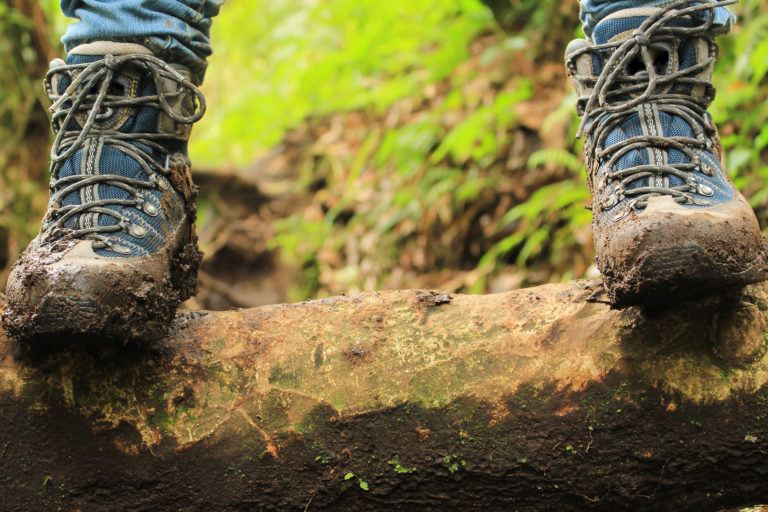
Quick Tips
Boots are built for adventure—whether you’re trekking through muddy trails, navigating city streets, or simply surviving winter. But all that action takes a toll. Dirt, grime, salt stains, and even mold can build up over time, damaging the materials and shortening the lifespan of your beloved boots. Learning how to clean boots properly can keep them looking sharp, smelling fresh, and lasting for years.
Regardless of whether your boots are made of leather, suede, rubber, or synthetic materials, we’ve got the best cleaning techniques to restore them to their former glory. Let’s dive in.
What You’ll Need to Clean Your Boots
Before you start, gather these supplies:
- Soft-bristled brush or old toothbrush – To remove dirt and debris.
- Microfiber cloth or sponge – For wiping down surfaces.
- Mild soap or boot cleaner – Avoid harsh detergents that can damage the material.
- White vinegar – Great for salt stains.
- Baking soda or cornstarch – Helps absorb odors and grease stains.
- Waterproofing spray or conditioner – To protect your boots after cleaning.
- Gloves (optional but recommended) – Keeps your hands clean from grime.
How to Clean Boots Based on Material
1. How to Clean Leather Boots
Leather boots are durable, but they require special care to maintain their look and longevity.
- Remove loose dirt by brushing with a soft-bristled brush or wiping with a dry microfiber cloth.
- Make a mild cleaning solution with warm water and a small amount of mild soap or leather cleaner.
- Wipe down the boots with a damp cloth dipped in the solution. Avoid soaking the leather.
- Remove salt stains with a mixture of equal parts white vinegar and water. Dab the solution onto the stains, then wipe clean.
- Condition the leather by applying a leather conditioner or oil to prevent cracking and drying.
- Allow boots to dry naturally at room temperature. Never use direct heat, as it can warp the leather.
2. How to Clean Suede Boots
Suede is beautiful but notoriously delicate. Here’s how to clean suede boots without ruining them:
- Use a suede brush to gently remove dirt and scuffs. Always brush in one direction.
- For stains, use white vinegar applied to a microfiber cloth. Lightly dab (don’t rub!) the stain and let it air dry.
- Remove grease stains by sprinkling cornstarch or baking soda on the stain. Let it sit overnight, then brush it off.
- Use a suede eraser (or a regular white eraser) to remove tough marks.
- Protect with a suede waterproofing spray to repel future stains and moisture.
3. How to Clean Rubber Boots
Rubber boots (like rain boots and work boots) are easy to clean but can develop a cloudy white film called “blooming.”
- Rinse boots with water to remove dirt and debris.
- Scrub with mild soap and water using a sponge or brush.
- Remove scuffs and white film with a small amount of olive oil or rubber boot cleaner applied to a cloth.
- Dry thoroughly and apply a rubber conditioner to maintain flexibility.
4. How to Clean Synthetic Boots
Synthetic boots are the easiest to maintain and are often water-resistant.
- Wipe down with soapy water using a cloth or sponge.
- Use a soft-bristled brush to scrub stubborn dirt.
- Rinse with clean water and air dry.
- Apply waterproofing spray if necessary.
How to Remove Odors from Boots
Even if your boots look clean, foot odor can still linger. Here’s how to get rid of it:
- Sprinkle baking soda or cornstarch inside and let it sit overnight to absorb odors.
- Use a mixture of equal parts water and white vinegar to wipe the insides.
- Place dryer sheets or activated charcoal sachets inside your boots when storing them.
- Air them out regularly by removing the insoles and letting them dry between wears.
How Professionals Clean Boots
Professional cobblers and boot care specialists use these advanced techniques:
- Steam cleaning – Uses high-temperature steam to break down dirt and bacteria.
- Deep conditioning – For leather boots, pros apply high-quality conditioners and polish.
- UV sanitization – Some professional cleaners use UV light to kill bacteria and fungi inside boots.
- Specialized brushes and solvents – Used to clean delicate materials like suede without damage.
If your boots are expensive or heavily stained, it may be worth taking them to a professional for restoration.
How Often Should You Clean Your Boots?
- After every wear in muddy conditions – Wipe off dirt to prevent buildup.
- Weekly – Light cleaning to maintain appearance.
- Monthly – Deep clean and condition to extend lifespan.
- Seasonally – Waterproof and store properly between heavy-use seasons.
Final Thoughts
Keeping your boots clean isn’t just about aesthetics—it’s about durability, comfort, and making sure you don’t leave behind a trail of grime wherever you go. Whether they’re leather, suede, rubber, or synthetic, regular cleaning and maintenance will keep your boots looking great and performing well.
So, go ahead—kick up some dirt. Just make sure you know how to clean your boots afterward.